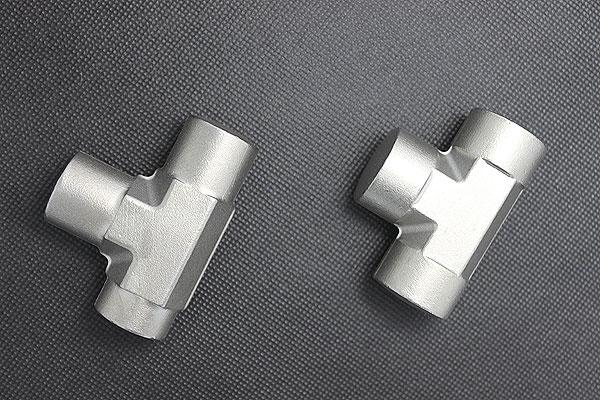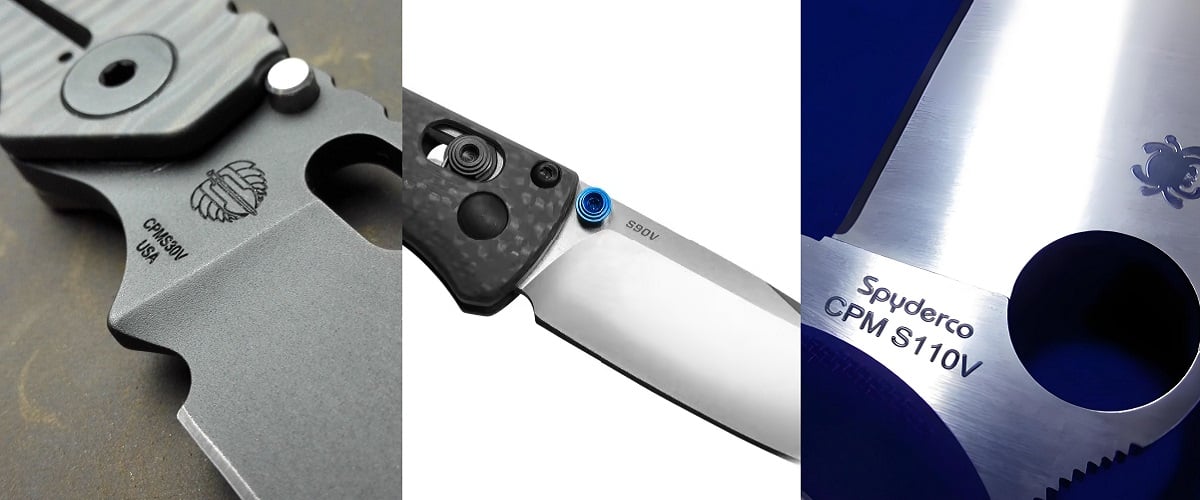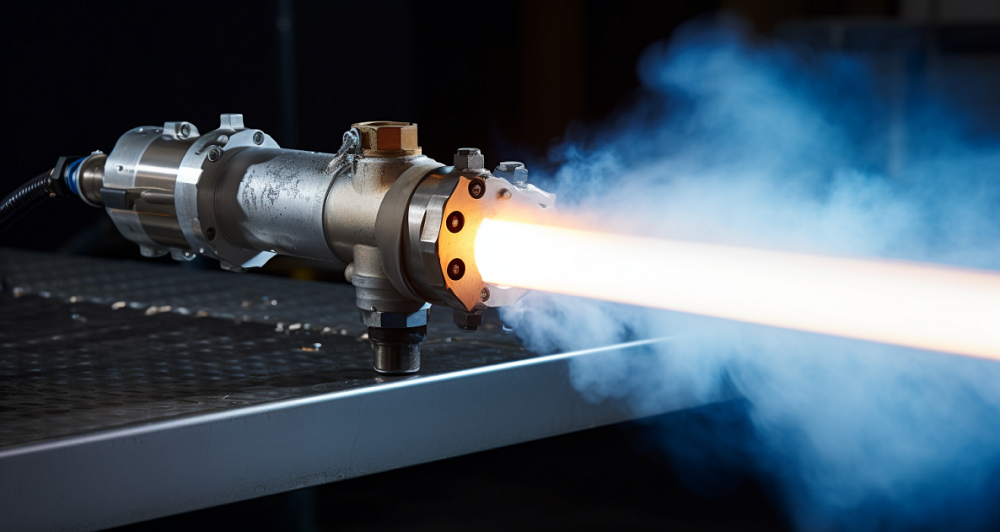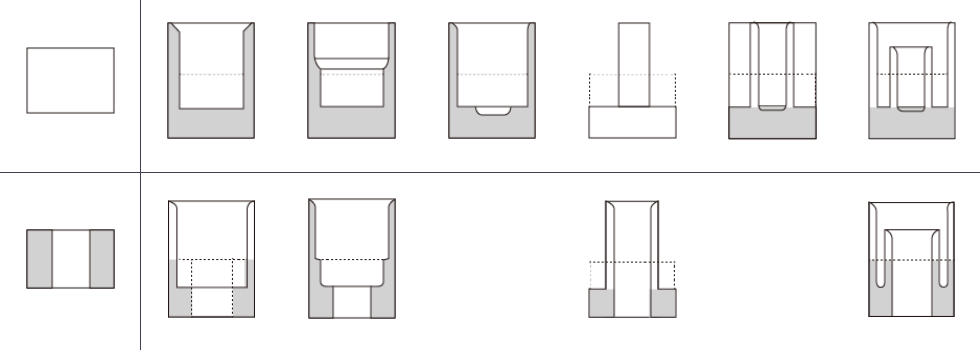The stamping process is an important category of sheet metal fabrication technologies; numerous stamped hardware parts are used in aerospace, automobile, shipbuilding, machinery, and other fields. What is metal stamping, and what are its uses? Today, let’s understand everything about metal stamping.

What Is Metal Stamping and How Does It Work?
Metal stamping is a manufacturing process that involves shaping or cutting metal sheets using a press machine fitted with dies – precisely designed tools that form the metal into specific shapes. During this process, a flat sheet of metal is placed between the dies, and high pressure is applied to either cut or form the metal into the desired shape. The process can include various techniques such as blanking, bending, and forming, which may be combined to produce complex parts.
What Metals Can Be Stamped?
Metal stamping can be performed on a wide range of metals, depending on the requirements of the final product. Common materials include steel, aluminum, brass, copper, and stainless steel. Choose the best stamping material based on factors such as strength requirements, corrosion resistance, weight, cost, and more.
Advantages of Metal Stamping
- High production rates: Metal stamping allows for rapid manufacturing of large volumes of parts.
- Excellent accuracy: The process achieves precise and consistent shapes and dimensions.
- Cost-effective for large volumes: Ideal for mass production, reducing per-unit costs.
- Easily automated: Automation enhances production speed, efficiency, and repeatability.
- Custom tooling: Dies and press setups are specifically designed to match exact part specifications.
- Handles complexity: Tooling can accommodate various part complexities, tolerances, and material thicknesses.
Applications of Metal Stamping
- Medical industry: Production of surgical instruments, brackets, and components for diagnostic and imaging equipment.
- Power generation: Manufacturing of parts for generators, turbines, and transformers.
- Aerospace: Fabrication of structural parts used in aircraft and spacecraft.
- Defense and military: Components such as ammunition casings, firearms parts, vehicle parts, and mounting brackets.
- Automotive: Production of various car parts and components.
- Electronics: Creation of components for computers and other electronic devices.
- Household items: Manufacturing of everyday metal products like teapots and kitchen tools.
Different Types of Metal Stamping Processes
Computer Numerical Control (CNC) Metal Stamping
CNC metal stamping is a highly precise and programmable stamping method where all typical stamping operations—such as punching, embossing, bending, and flanging—are controlled by computer codes (G-codes and M-codes). Unlike traditional stamping, CNC machines are programmed directly from CAD designs, allowing them to replicate complex shapes with high accuracy and tight tolerances. This precision makes CNC stamping ideal for intricate and detailed parts, although the process tends to be slower than conventional stamping methods. Because of its controlled and labor-saving nature, CNC stamping is best suited for low-volume production where accuracy and complexity outweigh speed.
Mechanical Servo Press Stamping
Mechanical servo stamping presses represent an advanced evolution of mechanical presses, replacing traditional motors, flywheels, and clutches with a servo motor that precisely controls the press’s speed, stroke length, and dwell time. This technology offers greater flexibility and energy efficiency by delivering torque only when needed. Mechanical servo presses can operate at faster speeds than hydraulic presses and produce more complex shapes due to their programmable motion control. Although they are the most expensive among the press types, their precision, efficiency, and ability to handle complicated stamping tasks make them a valuable investment for high-quality production needs.
Hydraulic Metal Stamping
Hydraulic stamping presses use a system of two cylinders filled with high-pressure hydraulic fluid to generate force. One cylinder functions as the press ram, and the other acts as a plunger. As fluid is pumped between these cylinders, pressure builds until it forces the ram downward against the die, shaping the metal workpiece. Hydraulic presses excel at producing deep draws and complex forms because they provide consistent force and can be precisely controlled to avoid overloads. They are generally simpler in construction than mechanical presses and are well-suited for operations requiring heavy tonnage and longer strokes.
Mechanical Metal Stamping
Mechanical stamping presses use a motor-driven mechanical system, such as flywheels or geared drives, to deliver rapid, repetitive force for reshaping metal sheets. This method is widely used for producing simple shapes quickly and efficiently in high volume. Mechanical presses vary in design, including single geared, double geared, and eccentric types, each suited for different stroke lengths, speeds, and metal thicknesses. For example, single-gear presses are common for progressive stamping with moderate speeds, while double-gear presses handle heavy-duty applications at slower speeds. Despite newer technologies, mechanical stamping remains a workhorse for straightforward, fast production runs.
Progressive Die Metal Stamping
Progressive die stamping is a sophisticated, high-volume process where a metal strip moves through multiple stations in a single die press. Each station performs a specific operation—such as punching, coining, bending, or drawing—progressively shaping the part until it is complete and cut free from the strip. This continuous, automated process reduces handling time, minimizes waste, and allows for the production of complex parts with consistent quality. Progressive stamping is ideal for large production runs due to its speed, cost-efficiency, and ability to maintain tight tolerances across thousands of parts.
Transfer Die Stamping
Transfer die stamping is a variant of progressive stamping where the workpiece is transferred mechanically from one station to another instead of moving continuously along a strip. This method is particularly useful for larger or more complex parts that don’t remain attached to a strip during processing. Transfer die stamping facilitates easier handling and tooling for big components like frames and structural parts, often at a lower tooling cost. It combines the benefits of progressive stamping with flexible part movement, making it suitable for medium to high volume production of large or intricate pieces.
Four Slide (Fourslide) Stamping
Four slide stamping uses four tools positioned at 90-degree angles around a workpiece to perform multiple stamping and forming operations simultaneously in a single cycle. Unlike progressive stamping, the workpiece remains stationary at the center as each slide tool bends, twists, cuts, or forms the metal from different directions. This unique multi-axis capability allows the production of intricate, detailed parts with complex geometries that would be difficult to achieve on traditional presses. Four-slide stamping is highly efficient, producing less waste and enabling rapid processing of small to medium-sized parts, making it popular in automotive, medical, and electrical industries where precision and complexity are required.
What Are the Steps in the Metal Stamping Process?
Here are basic phases of a metal stamping process, suitable for a broad range of stamping technologies and applications.
1. Part Design and Die Creation
The process starts with engineering the part design using computer-aided design (CAD) tools. Once optimized, a custom die is machined from hardened steel or carbide, precisely matching the part’s dimensions and features to guarantee consistent production quality.
2. Material Selection and Preparation
Metals are selected based on strength, corrosion resistance, conductivity, and cost, tailored to the end-use requirements. The metal sheets or coils are then cut to size, leveled, and prepped to ensure flatness and dimensional accuracy.
3. Blanking
Using a blanking die, the metal sheet is cut to the rough shape needed for the part. This involves shearing the sheet to create a flat blank that will be formed in later steps.
4. Forming
The blank is shaped into its final geometry through a variety of forming techniques:
- Bending: Folding the metal along a defined line using a die.
- Drawing: Stretching the metal over a die to create three-dimensional shapes like cups or cylinders.
- Stretching: Applying tension to elongate and create gentle curves in the metal.
5. Trimming and Piercing
Excess material around the formed part is trimmed away for a clean edge, while holes and slots are created by piercing dies as required.
6. Finishing
The stamped parts are finished by removing sharp edges (deburring), cleaning, polishing, and applying surface treatments or coatings to enhance performance and aesthetics.
7. Inspection and Quality Assurance
Final inspection ensures all parts meet dimensional tolerances and quality requirements before shipping or assembly.
Types of Metal Stamping Dies
Metal stamping dies are specialized tools used in the stamping process to shape or cut metal materials into desired forms. These dies consist primarily of an upper mold (punch) and a lower mold (die), positioned within a press. When the press operates, it applies ton-level downward pressure, forcing the metal sheet or strip between the molds. The punch shapes the metal by cutting, bending, or forming it into the final product. Metal stamping dies come in various types to suit different production needs and complexities.
Single Punch Die
A single punch die typically consists of one punch and one corresponding die, or multiple sets of these, where each punch performs a single stamping operation, such as creating one hole or shape. This type of die is designed for specific, singular processes and cannot be easily adapted for other operations. It is ideal for small to medium batch production, especially when the stamping requirements frequently change, as it allows easy adjustment and replacement of parts.
The metal plate is positioned in the die’s working area and often clamped for stability. The punch descends, applying force to shape or punch the metal. After stamping, the punch retracts, and the finished piece is manually removed before repeating the process.
Progressive Die
Progressive dies, also known as continuous dies, use strip metal fed through multiple stations within the same die to perform several stamping operations sequentially in a single press cycle. This enables the simultaneous completion of processes such as punching, cutting, forming, and blanking as the metal strip moves through the die.
The metal strip is fed into the die, guided, and clamped to ensure precision. At each station, a specific stamping operation is performed as the strip advances incrementally. After passing through all stations, the finished part is separated from the strip and discharged for further processing.
Compound Die
Compound dies perform multiple stamping operations simultaneously in a single press stroke, such as punching holes and forming outer shapes at the same time. This type of die combines some benefits of both single punch and progressive dies, making it suitable for medium batch production where efficiency and economy are important.
The raw metal strip is placed in the die. As the press descends, multiple punches act together to shape or cut the metal in one stroke, completing several operations at once. The part is then separated from the strip and finished in a single step.
Transfer Die
Transfer dies are used for complex metal parts that require multiple different operations performed in sequence, but not necessarily on a continuous strip. Parts are transferred mechanically from one station to the next, allowing each station to perform a distinct operation, such as punching, bending, or stretching.
After each stamping operation, the part is mechanically or manually moved to the next station. The process continues through a series of dies or machines arranged in a production line until the final product is completed.
Metal Stamping vs Die Casting
Metal stamping and die casting are two distinct metal-forming technologies. While metal stamping forms parts by pressing and shaping flat sheet metal, die casting involves injecting molten metal into a mold at high speed and pressure to create complex 3D shapes. Die casting is ideal for intricate parts such as detailed knobs or screws, which are difficult to produce with stamping. Conversely, stamping is generally better suited for simpler, flat, or bent parts and is more cost-effective for high-volume production of such shapes.
Metal Stamping vs Punching
Sheet metal stamping and punching are both common fabrication terms, and punching is actually a subset of the stamping process. These two techniques have some similarities and are used interchangeably sometimes. So what are the differences between metal punching and metal stamping?
1. Function and Purpose
Metal punching is primarily used to cut out specific holes or simple shapes in metal sheets by driving a punch through the material and into a die. Metal stamping encompasses a broader range of operations beyond just cutting. It can include bending, embossing, blanking, coining, and other forming techniques to transform flat metal sheets into intricate three-dimensional shapes and patterns.
2. Tooling Requirements
The tooling involved in metal punching tends to be simpler, as the process generally requires only a punch and a die designed for cutting out holes or shapes. Often, CNC controls guide the punch for precise cuts. Metal stamping, however, demands more sophisticated and complex tooling arrangements, especially when multiple steps or elaborate designs are involved. Stamping may require a series of dies to perform different operations sequentially, such as bending, flanging, or embossing.
3. Material Thickness
Both metal stamping and punching are most efficient when working with relatively thin sheet metals. Typically, they operate with sheet thicknesses ranging roughly between 0.5 mm and 6 mm. Stamping machines, however, can handle a slightly wider range of thicknesses depending on the material and the machine’s capabilities, and they can create detailed surface patterns or shapes on metals of similar thickness. Punching, while also effective within this thickness range, is especially suited for thinner materials where clean holes can be produced by shear force.
4. Production Speed
Punching is generally a faster, single-step operation. This makes it ideal for quick turnaround and high-volume hole-making tasks. Stamping, by comparison, is often more time-intensive due to the complexity of the operations involved.
5. Design Freedom and Complexity
Stamping excels in producing complex, multi-dimensional parts featuring intricate designs such as embossed textures, bends, flanges, and notches. This process offers greater design flexibility for sheet metal parts. Punching is relatively limited in design complexity since it will not alter the metal shape beyond the cut.
6. Cost Considerations for Production Volume
For smaller production runs or projects requiring fewer parts, punching is generally more economical due to its lower initial setup costs and simpler tooling. Stamping, while having higher upfront costs related to die creation and machine setup, becomes more cost-effective for large-scale manufacturing. The investment in stamping dies pays off when producing thousands or millions of parts, where the cost per unit decreases significantly.
7. Material Waste and Efficiency
Punching operations tend to produce more scrap material because they cut out shapes or holes, which results in leftover metal pieces (often called slugs). This can lead to greater material wastage. Stamping processes, on the other hand, usually generate less scrap as they often reshape the metal instead of removing large portions.
8. Tool Durability and Maintenance
Punching tools face significant wear and tear due to the intense force required to shear through metal sheets, especially harder materials, which can shorten the tool lifespan. Stamping dies, designed to perform various forming operations, are typically more robust and built for longer operational life. Nevertheless, both punching and stamping tools require routine maintenance and occasional replacement to maintain production quality.
9. Precision and Tolerance Capabilities
While punching can achieve excellent precision in placing holes and shaping simple cutouts, stamping provides superior accuracy for complex designs that demand tight tolerances. Stamping’s ability to emboss, bend, and coining metal with high precision makes it more suitable for parts requiring consistent dimensions and intricate details.







